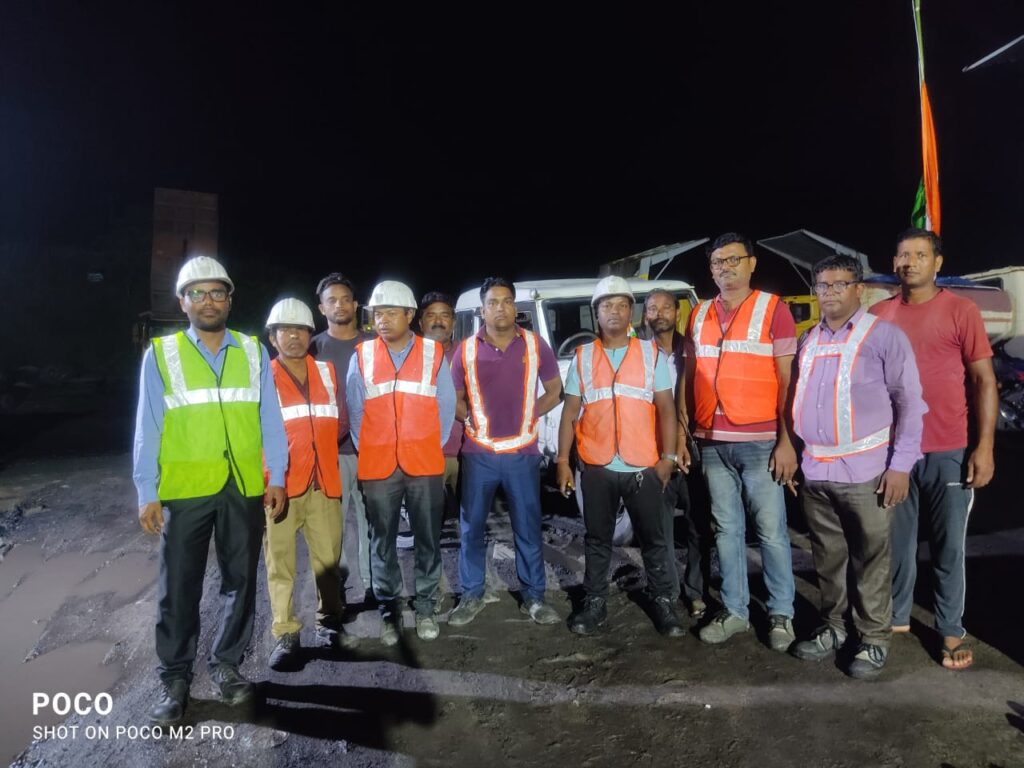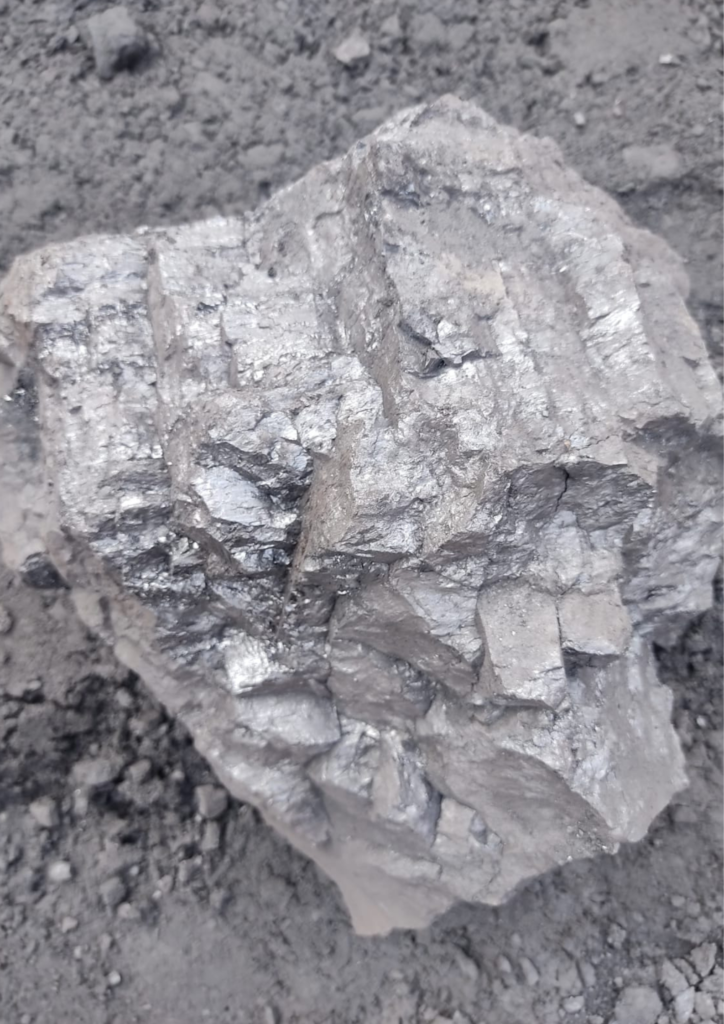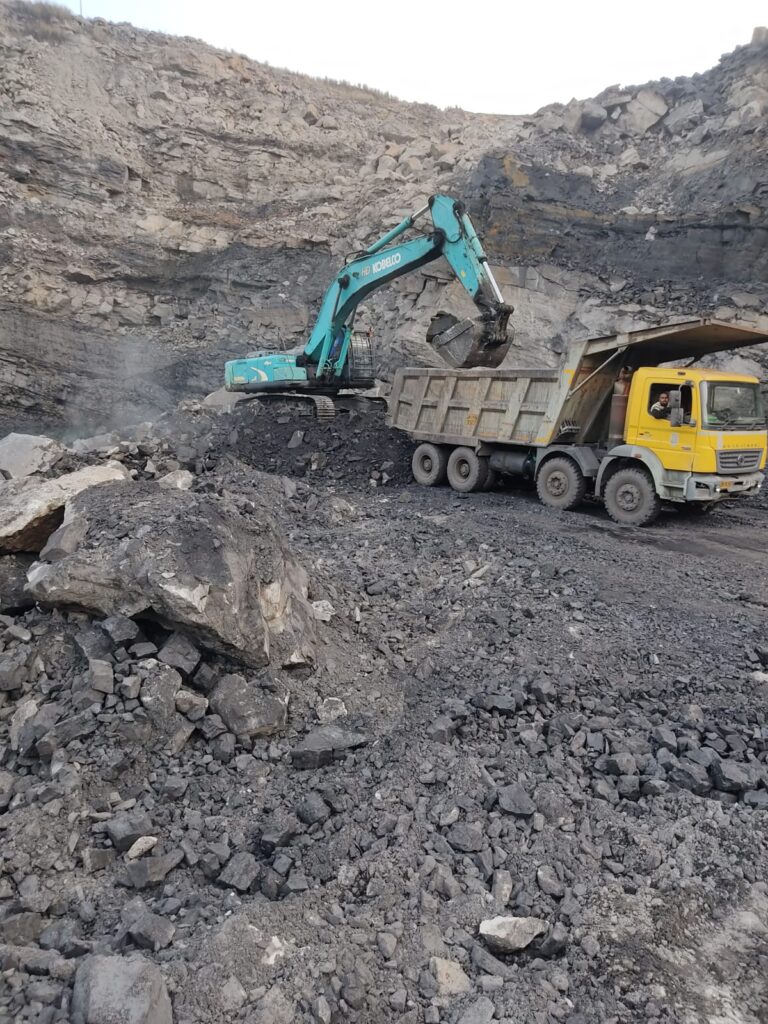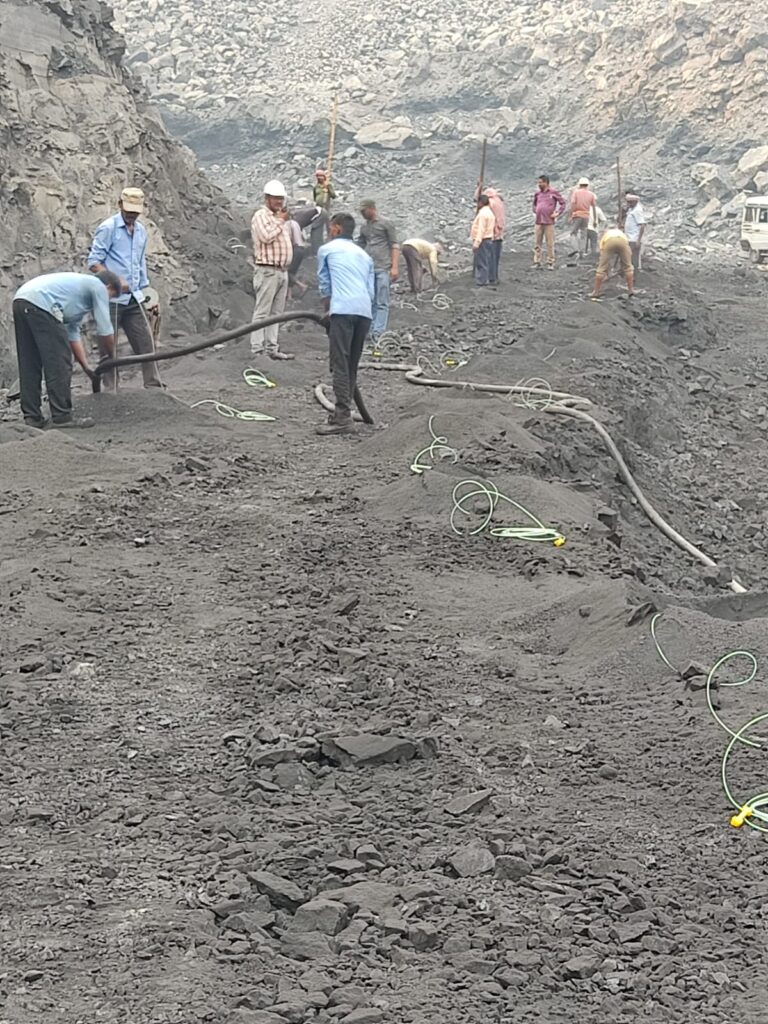Overview: Coal Mines in India🌮🇳
🏭 In order to fully understand coal mines in India, let’s start with defining it, discussing its significance to the country’s energy system, and providing an overview of the country’s enormous coal reserves and production.
India’s industrial strength and energy security are based primarily on coal mining.
A. The Meaning of Coal Mining 🙠️
The process of removing coal from the earth’s surface or subterranean deposits is known as coal mining.

It uses a variety of techniques, including surface mining (open-pit, strip mining) and underground mining (shaft, drift mining), to reach coal seams that are deeply buried in the ground.
B. Coal’s Importance in India’s Energy System 💡

In India, coal continues to be the main energy source for cooking in households, industry, and the production of electricity.
Because of its affordability, quantity, and dependability, it is significant and essential for supplying the country’s expanding energy needs.
C. Synopsis of India’s Production and Coal Reserves 📊
With about 300 billion metric tons of coal reserves, India is among the world’s top coal producers.
🌏 The states that have these reserves are spread out, with Jharkhand, Odisha, Chhattisgarh, and West Bengal being the main coal-producing regions.
India now ranks among the world’s top producers of coal due to its consistent rise in coal production.
II. Background History: Following the Origins of Indian Coal Mining 🕰️

India’s coal mining industry boasts a rich historical background spanning several centuries.
As we go into the early history of coal mining, consider how mining techniques have evolved, and analyze the lasting impact of British colonial rule on India’s coal sector, stay tuned.
A Brief Account of India’s Early History of Coal Mining 🏞️
India has a long history of coal mining, dating back to the days when local people mined coal by hand.
The Raniganj coalfield has been mined for coal from the late 1700s, according to historical documents.
B. Advancements in Coal Mining Methods and Technology ♤️

With the development of technology and machinery, the coal mining industry in India experienced substantial changes.
The mining sector has experienced a paradigm shift in mining processes over the years, moving from crude manual extraction methods to mechanized operations.
C. British Colonial Rule’s Effect on Indian Coal Mining 🇬🌧
India’s coal mining industry was greatly influenced by the British colonial era.
Large-scale coal mining operations and the construction of railroads for transportation not only created the conditions for industry but also fostered socioeconomic inequality and exploitation.
Current State of Coal Mining in India: Navigating Challenges and Opportunities 🌟
As we traverse through the modern landscape of coal mining in India, we’ll uncover the geographical hotspots of coal production, illuminate the key stakeholders driving the industry, and address the formidable challenges confronting the sector.
A. Major Coal Producing Regions in India 🗺️
India’s coal reserves are distributed across several states, each contributing significantly to the nation’s coal output.
From the coal-rich belts of Jharkhand and Odisha to the bustling mines of Chhattisgarh and West Bengal, these regions serve as the lifeline of India’s coal industry.
| State | Major Coalfields |
|---|---|
| Jharkhand | Jharia, Raniganj, Bokaro, Karanpura |
| Odisha | Talcher, Ib Valley, Mahanadi |
| Chhattisgarh | Korba, Hasdeo Arand, Mand Raigarh |
| West Bengal | Raniganj, Asansol, Durgapur |
B. Key Players in the Indian Coal Mining Industry 🏭
The Indian coal mining sector is home to a diverse array of stakeholders, including state-owned enterprises, private mining companies, and multinational corporations.
From Coal India Limited (CIL), the world’s largest coal producer, to prominent private players like Adani Group and Reliance Power, these entities play a pivotal role in shaping the industry’s dynamics.
C. Challenges Facing the Coal Mining Sector in India 🛑
Despite its significance, the coal mining sector in India grapples with multifaceted challenges that pose hurdles to sustainable growth.
From environmental concerns such as land degradation and pollution to socio-economic issues like labor disputes and community resistance, addressing these challenges is imperative for the industry’s long-term viability.
Environmental and Social Impacts: Balancing Progress with Responsibility 🌱
The pursuit of coal extraction in India has not been without consequences.
In this section, we’ll shed light on the environmental degradation caused by coal mining activities, highlight the health hazards faced by coal mine workers, and address the socio-economic impacts on local communities.
A. Environmental Degradation Caused by Coal Mining Activities 🌍
Coal mining operations often leave a lasting imprint on the environment, manifesting in deforestation, soil erosion, water pollution, and habitat destruction.
The indiscriminate use of land and water resources, coupled with inadequate waste management practices, exacerbates environmental degradation, posing long-term risks to ecosystems and biodiversity.
B. Health Hazards for Coal Mine Workers ⚠️
Coal mining is a hazardous occupation, exposing workers to a myriad of health risks ranging from respiratory ailments due to exposure to coal dust and toxic gases to accidents and injuries in hazardous working conditions.
Despite efforts to improve safety standards and occupational health practices, coal mine workers continue to face significant health hazards, necessitating comprehensive interventions for their protection.
C. Displacement of Communities and Social Conflicts 🏘️
The expansion of coal mining operations often entails the displacement of indigenous and marginalized communities, leading to social upheaval, loss of livelihoods, and cultural disintegration.
Moreover, the contentious issue of land acquisition and resource rights frequently sparks conflicts between mining companies, local communities, and government authorities, underscoring the need for equitable and participatory approaches to resource governance.
Government Policies and Regulations: Navigating the Regulatory Landscape 📜
The coal mining sector in India operates within a robust regulatory framework aimed at ensuring environmental sustainability, worker safety, and equitable resource governance.
In this section, we’ll provide an overview of government initiatives and regulations governing coal mining activities in the country.
A. Overview of Government Initiatives to Regulate Coal Mining 🏛️
The Indian government has implemented various initiatives and policies to regulate coal mining activities and promote sustainable development in the sector.
Key measures include the formulation of mining laws, environmental regulations, and labor standards to safeguard the interests of stakeholders and mitigate adverse impacts on the environment and communities.
B. Environmental and Safety Regulations in Place ⚖️
Environmental regulations play a pivotal role in governing coal mining operations, prescribing norms and standards for pollution control, reclamation of mined areas, and rehabilitation of affected ecosystems.
Additionally, stringent safety regulations mandate adherence to safety protocols, provision of protective gear, and implementation of emergency response measures to ensure the well-being of coal mine workers.
C. Recent Policy Changes and Their Implications 🔄
Recent policy changes in the coal mining sector, such as the introduction of commercial coal mining and amendments to mining laws, have significant implications for industry stakeholders and the broader socio-economic landscape.
While these policy reforms aim to promote transparency, efficiency, and investment in the coal sector, their implementation requires careful consideration of environmental, social, and economic implications to achieve sustainable outcomes.
Technological Innovations and Future Prospects: Pioneering Sustainable Solutions 🌱
Innovation lies at the heart of transforming coal mining practices towards sustainability.
In this section, we’ll delve into the cutting-edge technologies revolutionizing coal mining operations, the shift towards cleaner practices, and the potential for renewable energy alternatives to reduce reliance on coal.
A. Advances in Coal Mining Technologies 🛠️
The coal mining industry is witnessing a paradigm shift with the adoption of advanced technologies aimed at enhancing operational efficiency, safety, and environmental sustainability.
From automated mining equipment and real-time monitoring systems to predictive analytics and robotics, these innovations are reshaping traditional mining practices and improving productivity while minimizing environmental impacts.
B. Shift Towards Cleaner and More Sustainable Practices 🌿
Amid growing concerns over environmental degradation and climate change, there is a pressing need for coal mining companies to embrace cleaner and more sustainable practices.
This includes investments in clean coal technologies such as carbon capture and storage (CCS), utilization of mine methane for power generation, and adoption of best practices for waste management and land reclamation to minimize ecological footprints.
C. Potential for Renewable Energy Alternatives 🌞
As the world transitions towards a low-carbon future, the role of renewable energy alternatives in reducing reliance on coal is gaining prominence.
India’s abundant renewable energy resources, including solar, wind, and hydroelectric power, present viable alternatives to coal for meeting the nation’s energy needs.
By harnessing these renewable resources and promoting energy diversification, India can reduce its carbon footprint and mitigate the environmental impacts associated with coal mining and combustion.
Economic Significance and Global Impact: Navigating Coal’s Role in the Energy Landscape 💰
The economic significance of coal mining in India extends far beyond its contribution to the national economy.
In this section, we’ll explore the pivotal role of coal in India’s economic development, its position in the global coal market, and the implications of India’s coal consumption on global climate goals.
A. Contribution of Coal Mining to India’s Economy 📈
Coal mining remains a cornerstone of India’s economic development, contributing significantly to GDP growth, employment generation, and revenue generation for both the government and private sector.
The coal industry’s multiplier effect on ancillary industries such as steel, power generation, and manufacturing underscores its integral role in driving economic growth and industrialization.
B. India’s Role in the Global Coal Market 🌏
India ranks among the world’s largest coal producers and consumers, exerting considerable influence on global coal markets.
As a major importer of coal, India plays a crucial role in shaping international coal trade dynamics, influencing coal prices, and contributing to energy security on a global scale.
C. Implications of India’s Coal Consumption on Global Climate Goals 🌍
Despite its economic importance, India’s heavy reliance on coal for energy production poses significant challenges to global climate goals and efforts to mitigate climate change.
The combustion of coal releases greenhouse gases, contributing to air pollution, global warming, and adverse environmental impacts.
As India strives to balance its energy security needs with climate mitigation objectives, transitioning towards cleaner energy sources and implementing stringent emission reduction measures is imperative.
Case Studies and Success Stories: Inspiring Examples of Sustainable Practices 🌟
In this section, we’ll showcase exemplary coal mining projects in India that prioritize sustainability, innovation, and community engagement.
From successful ventures leveraging advanced technologies to community-led initiatives promoting responsible mining practices, these case studies offer valuable insights into the potential for positive impact within the coal mining sector.
A. Successful Coal Mining Projects in India 🏭
- Gevra Open Cast Coal Mine, Chhattisgarh: Operated by South Eastern Coalfields Limited (SECL), the Gevra mine stands as one of the largest opencast mines in India.
- Through efficient mining practices and environmental management, the project has achieved high productivity while minimizing ecological disturbances.
- Talcher Coalfields, Odisha: The Talcher coalfields exemplify sustainable mining practices, with initiatives focused on land reclamation, afforestation, and water conservation. Collaborative efforts between mining companies, government agencies, and local communities have resulted in the restoration of degraded land and the promotion of biodiversity conservation.
B. Innovations in Sustainable Coal Mining Practices 🌿
- Adoption of Clean Coal Technologies: Companies like Coal India Limited (CIL) are investing in clean coal technologies such as coal beneficiation, coal gasification, and coal liquefaction to reduce emissions and improve energy efficiency in coal utilization.
- Water Recycling and Reuse: Mining operations are implementing innovative water management strategies, including recycling and reuse of water resources, to minimize freshwater consumption and mitigate the environmental impacts of coal mining on water quality and availability.
C. Community-Led Initiatives for Responsible Coal Mining 🤝
- Community Forest Management: In some mining regions, local communities are actively involved in forest management and restoration initiatives, leveraging traditional knowledge and participatory approaches to biodiversity conservation and sustainable resource utilization.
- Livelihood Diversification Programs: NGOs and grassroots organizations are implementing livelihood diversification programs in coal mining areas, empowering communities to explore alternative income-generating activities such as agroforestry, eco-tourism, and artisanal crafts.
Conclusion: Charting a Path Towards Sustainable Coal Mining in India 🌱
As we conclude our exploration of coal mining in India, it becomes evident that the industry stands at a crossroads, facing both challenges and opportunities in equal measure.
By embracing sustainable practices, fostering innovation, and prioritizing the well-being of communities and the environment, the coal mining sector can navigate the complexities of the modern energy landscape while contributing to India’s economic growth and energy security.
Through our journey, we’ve uncovered the multifaceted dimensions of coal mining, from its historical roots and economic significance to its environmental impacts and social implications.
We’ve witnessed the evolution of mining technologies, the formulation of regulatory frameworks, and the emergence of promising initiatives aimed at promoting responsible mining practices and mitigating adverse impacts.
Looking ahead, it is imperative for all stakeholders – including government agencies, mining companies, civil society organizations, and local communities – to collaborate closely in charting a path towards sustainable coal mining in India. This necessitates:
- Investment in Clean Technologies: Accelerating the adoption of clean coal technologies and renewable energy alternatives to reduce emissions, improve energy efficiency, and minimize environmental impacts.
- Strengthening Regulatory Oversight: Enhancing enforcement of environmental and safety regulations, promoting transparency and accountability in governance, and ensuring equitable distribution of benefits from mining activities.
- Empowering Communities: Empowering local communities through participatory decision-making, capacity-building initiatives, and equitable resource-sharing mechanisms to foster social inclusivity and address socio-economic disparities.
- Fostering Innovation and Collaboration: Encouraging research and innovation in sustainable mining practices, fostering knowledge-sharing platforms, and fostering partnerships between industry, academia, and civil society to drive continuous improvement and adaptation.
- Promoting Responsible Consumption: Promoting responsible consumption patterns, energy conservation, and demand-side management strategies to reduce reliance on coal and transition towards a diversified, low-carbon energy mix.
By embracing these principles and working collectively towards a shared vision of sustainable development, the coal mining sector in India can chart a course towards a more resilient, inclusive, and environmentally sustainable future.
As we bid farewell to this exploration, let us embark on this journey with optimism, determination, and a steadfast commitment to building a better tomorrow for generations to come.
Together, we can harness the transformative power of coal mining to create a future where prosperity, equity, and environmental stewardship go hand in hand. 🌟
Pingback: The Inspiring Journey of Dr. Chandrani Prasad Verma-First Woman Mining Engineer in India